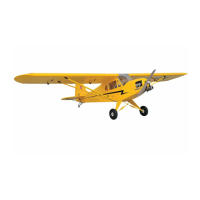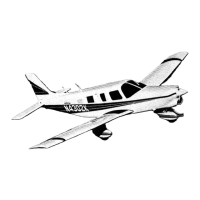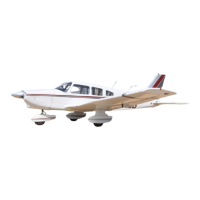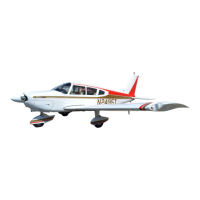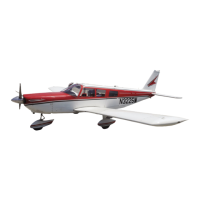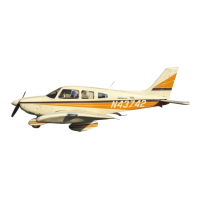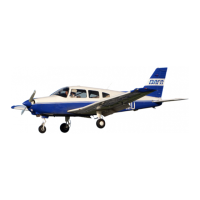3.5 AMPLIFIED EMERGENCY PROCEDURES (GENERAL)
The following paragraphs are presented to supply additional
information for the purpose of providing the pilot with a more complete
understanding of the recommended course of action and probable cause of
an emergency situation.
3.7 ENGINE INOPERATIVE PROCEDURES
ENGINE POWER LOSS DURING TAKEOFF (NOT AIRBORNE)
If engine failure occurs before the airplane has lifted off, and if there is
sufficient runway left for a safe stop, simply maintain directional control,
close the throttle, and brake to a stop.
If there is not sufficient runway remaining for a safe stop, close the
throttle, apply maximum braking, pull the mixture control to IDLE CUT-
OFF, and turn OFF the fuel selector, the master switch and the magnetos.
Maintain directional control, slow the airplane as much as possible, and
maneuver to avoid obstacles.
ENGINE POWER LOSS DURING TAKEOFF (IF AIRBORNE)
If engine failure occurs after the airplane has lifted off, and if sufficient
landing area remains for a touchdown and stop, lower the nose and maintain
airspeed to avoid a stall. Maintain directional control and land and stop
straight ahead.
If liftoff has occurred and there is not sufficient landing area remaining
for a safe landing and stop, maintain a safe airspeed to avoid a stall. Close
the throttle, pull the mixture control to IDLE CUT-OFF, and turn OFF the
fuel selector, the master switch, and the magnetos. Use of flaps depends
upon the circumstances; however, normally full flaps allow the slowest and
softest touchdown.
At low altitudes with a failed engine, turns should not be attempted,
except for slight and gentle deviations to avoid obstacles. A controlled crash
landing straight ahead is preferable to risking a stall which could result in an
uncontrolled roll and crash out of a turn.
PIPER AIRCRAFT CORPORATION SECTION 3
PA-38-112, TOMAHAWK EMERGENCY PROCEDURES
ISSUED: JANUARY 20, l978 REPORT: 2126
3-7
3.5 AMPLIFIED EMERGENCY PROCEDURES (GENERAL)
The following paragraphs are presented to supply additional
information for the purpose of providing the pilot with a more complete
understanding of the recommended course of action and probable cause of
an emergency situation.
3.7 ENGINE INOPERATIVE PROCEDURES
ENGINE POWER LOSS DURING TAKEOFF (NOT AIRBORNE)
If engine failure occurs before the airplane has lifted off, and if there is
sufficient runway left for a safe stop, simply maintain directional control,
close the throttle, and brake to a stop.
If there is not sufficient runway remaining for a safe stop, close the
throttle, apply maximum braking, pull the mixture control to IDLE CUT-
OFF, and turn OFF the fuel selector, the master switch and the magnetos.
Maintain directional control, slow the airplane as much as possible, and
maneuver to avoid obstacles.
ENGINE POWER LOSS DURING TAKEOFF (IF AIRBORNE)
If engine failure occurs after the airplane has lifted off, and if sufficient
landing area remains for a touchdown and stop, lower the nose and maintain
airspeed to avoid a stall. Maintain directional control and land and stop
straight ahead.
If liftoff has occurred and there is not sufficient landing area remaining
for a safe landing and stop, maintain a safe airspeed to avoid a stall. Close
the throttle, pull the mixture control to IDLE CUT-OFF, and turn OFF the
fuel selector, the master switch, and the magnetos. Use of flaps depends
upon the circumstances; however, normally full flaps allow the slowest and
softest touchdown.
At low altitudes with a failed engine, turns should not be attempted,
except for slight and gentle deviations to avoid obstacles. A controlled crash
landing straight ahead is preferable to risking a stall which could result in an
uncontrolled roll and crash out of a turn.
PIPER AIRCRAFT CORPORATION SECTION 3
PA-38-112, TOMAHAWK EMERGENCY PROCEDURES
ISSUED: JANUARY 20, l978 REPORT: 2126
3-7
